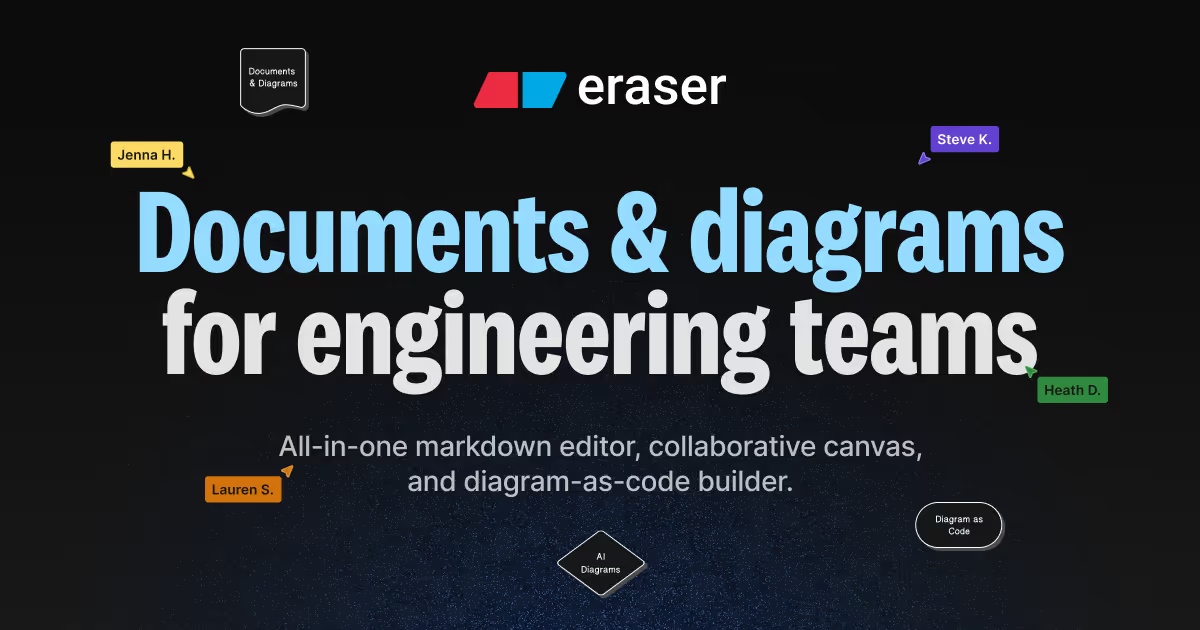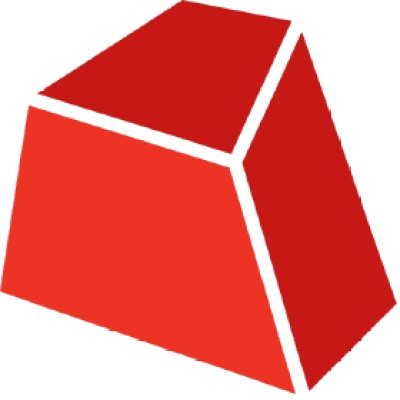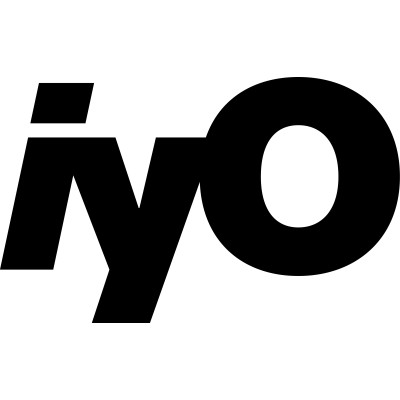
At Eraser, we envision a future where technical design and documentation are seamlessly integrated with intelligent assistance, empowering engineering teams to create with unprecedented speed and precision. Our commitment is to transform complex workflows by embedding AI as a true co-pilot that enhances human creativity and control, rather than replacing it.
We are building a platform that treats diagrams as code, bridging the gap between development ecosystems and technical documentation. This innovative approach fosters collaboration, scalability, and traceability, enabling teams to maintain clarity and alignment in the most complex projects.
Driven by advanced AI technologies and a deep understanding of engineering needs, Eraser is dedicated to reshaping the way technical teams innovate, document, and communicate — unlocking new levels of productivity and insight for enterprises around the world.
Our Review
We've been watching Eraser for a while now, and honestly, they've cracked something that most diagramming tools completely miss. While everyone else treats technical diagrams like fancy PowerPoint slides, Eraser treats them like what they actually are — code that deserves proper version control, collaboration, and automation.
The San Francisco startup has built what they call an "AI co-pilot" for technical design, and after digging into their approach, we think that's exactly the right framing. This isn't about replacing engineers with AI — it's about giving them a ridiculously smart assistant.
The "Diagram-as-Code" Breakthrough
Here's what got our attention first: Eraser's diagrams aren't just pretty pictures. They're backed by editable syntax, which means you can version control them, review them in pull requests, and update them automatically when your actual code changes.
We've seen too many teams struggle with outdated architecture diagrams that nobody wants to maintain. Eraser's approach — where diagrams live alongside your code and follow the same workflows — feels like the obvious solution we didn't know we needed.
AI That Actually Gets Technical Context
DiagramGPT, their AI diagram generator, does something clever. Instead of just turning text into generic boxes and arrows, it understands technical concepts well enough to create meaningful architecture diagrams from plain English prompts or code snippets.
The results we've seen are impressive — customers report 10x speed improvements in diagram creation and 30% boosts in developer productivity. One team scaled from 4 to over 110 technical documents in just six months, which tells us this isn't just about making diagrams faster — it's about making documentation sustainable.
Built for Real Engineering Teams
What we appreciate most is how Eraser fits into existing developer workflows. GitHub integration means you can edit diagrams directly in README files. Markdown support keeps everything portable. Real-time collaboration works like you'd expect from any modern dev tool.
They're also serious about enterprise needs — SOC 2 Type 2 certification and a promise not to train AI models on customer data. Fortune 100 companies are already using this, which suggests they've nailed the security and compliance requirements that kill many promising dev tools.
For software engineers, system architects, and DevOps teams tired of fighting with clunky diagramming tools that don't understand their world, Eraser looks like a genuine game-changer. It's AI assistance done right — smart, contextual, but always keeping humans in control.
Feature
AI Architecture Diagram Generator from plain English or code snippets
DiagramGPT leveraging GPT-4 for natural language diagram creation
Diagram-as-Code with version control and code reviews
Markdown-based notes linked to diagrams
GitHub integration for editing directly in README files
Export diagrams and notes as PNG, SVG, PDF, Markdown
Real-time multiplayer collaboration with sharing, commenting, presenting








